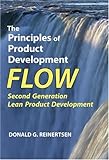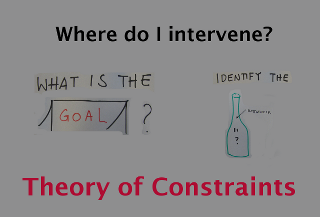My Devoxx presentation on Real Options is now available on Slideshare:
|
|||||
|
Decisions, decisions, decisionsOn Friday march 29th I’ll present a session about Real Options and other techniques to take better architectural decisions at a better moment. Billions of years of evolution have equipped us with these wonderfully irrational brains that sometimes get in the way of making good decisions. With a few simple but counter-intuitive techniques we can make our decisions a bit less stressful and more useful. See you in Paris. Six éléments essentielsLa deuxième présentation à la Conférence Agile France 2011 proposait six bases essentielles pour mettre en place un environnement de travail Lean ou Agile. Comme toujours il y a de bonnes nouvelles et de mauvaises nouvelles:
La présentation ne donne qu’un aperçu de chaque élément. Voici des ressources pour les 3 premiers élements, qui peuvent vous aider dans vos recherches. Les 3 autres éléments seront décrit dans un billet suivant. 1. La Théorie des ContraintesOriginalement décrite par Eli Goldratt dans le roman “Le But”, cette théorie se résume très facilement:
Comme mon grand-père savait déjà : “pour rendre une chaine plus forte, il faut renforcer le maillon le plus faible”. Le “Jeu du Goulot d’étranglement” vous fait vivre les conséquences qui vont souvent contre le “bon sens”. 2. Les Real OptionsAu lieu de prendre des décisions difficiles le plus tôt possible, comme nous encourage toute la littérature sur l’architecture informatique, il faut
L’heuristique que j’utilise:
Exemples concrets:
L’article “Real Options Underlie Agile Practices” par Chris Matts (en anglais) explique les Real Options et le lien avec Agile et lean. Il y a un résumé des Real Options sur le site Agile Coach. 3. Gérer par la valeur, pas par les coûts
Bien définir la Valeur avec toute l’équipe apporte beaucoup de bénéfices:
La présentation Les Bases des Méthodes Lean/Agile
View more presentations from AgileCoach.net
June 7th, 2011 | Category: agile, lean, presentations, Real Options, systems thinking, theory of constraints Estimating Business ValueAt XP Days London I attended an Open Space session on “Estimating Business Value”. Ironically, it was hard to hear the other people in the working group because of the noise generated by the working group next to us discussing “Agile isn’t solving our customers problems because they’re not here“. Yup, we were discussing business value with not a customer in sight or any idea on how we could involve them in the discussion. The topic of the session was
We didn’t get much result from the discussion. There’s no writeup on the open space wiki. I don’ t know if the organiser of the session got anything out of the session. I didn’t. First of all, the session never defined what “Business Value” is. That’s the topic of a later blog post. Secondly, I don’t think you can get a good answer to that question because it’s the wrong question. Why is this the wrong question?Because it presupposes that we first write User Stories and then estimate their value. If we don’t know the value of the stories, we risk writing a lot of low (or zero) value stories. And many teams do. We write lots of User Stories in the hope of discovering the high value ones. We end up with a lot of stories that then have to be prioritised, valued, estimated and managed. Portia taught me a colourful description of this result: a Vomit of User Stories. What are the consequences of a Vomit of User Stories?We spend a lot of time on them:
Just to decide what gets done in the next iteration. If we estimate and track tasks, not stories, we need to add
Add to that
Meanwhile, there’s “backlog grooming” going on. It’s a wonder anything gets done in an iteration! Indeed, I’ve heard many managers and developers of companies that have started with Agile complain about the many meetings. They feel that they’re not getting much done. So, what’s the correct question then?
That presupposes a different process: one where we first define what Business Values we intend to achieve and then generate those User Stories that contribute to the Business Values. That should be a no-brainer, right?
The User Stories that implement those business processes clearly contribute to the business values, otherwise we wouldn’t even have considered them. What’s the value of an iteration?We keep talking about value and business value, but for our customers there’s no value delivered by iterations. They see real value when the product (and that’s not just software, despite “Working software over comprehensive documentation”!) gets released into the hands of users. Iterations (more correctly: timeboxes) are a useful project management tool, no more. What’s the business value of a story?I don’t think it matters much. Why do you want to know the business value of a user story?
Why else would you want to know the business value of a user story? I see no need to put a Business Value number on User Stories. In the end, the customer doesn’t care about the allocation of user stories to timeboxes. They care that the selected business values are delivered in the release. Asking the right questionBefore we can find the right User Stories, we first need to ask our customers
So, instead of inviting your customers to XP Days, why don’t you go to them and ask some questions? Asking questions is simple, but not easy. Do you know what values your work is going to deliver? Do you know how your work delivers those values? If not, why are you doing this project? Why are you being paid? I present the Bottleneck Game at Agile Tour Lille on October 30th 2009. Come and play to discover the Theory of Constraints and the “Five Focusing Steps” to really improve processes. Experience how and why Agile, Lean and Real Options work. October 24th, 2009 | Category: agile, Events, lean, Real Options, systems thinking, theory of constraints |
||||
| Copyright © 2025 Thinking for a Change - All Rights Reserved | |||||


